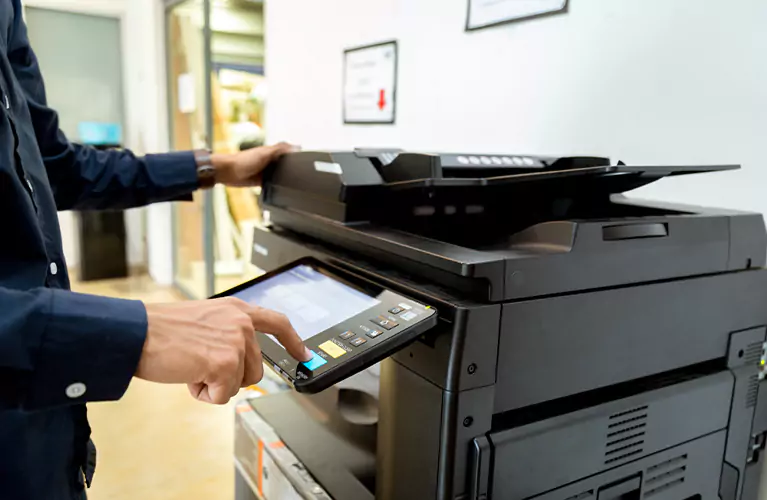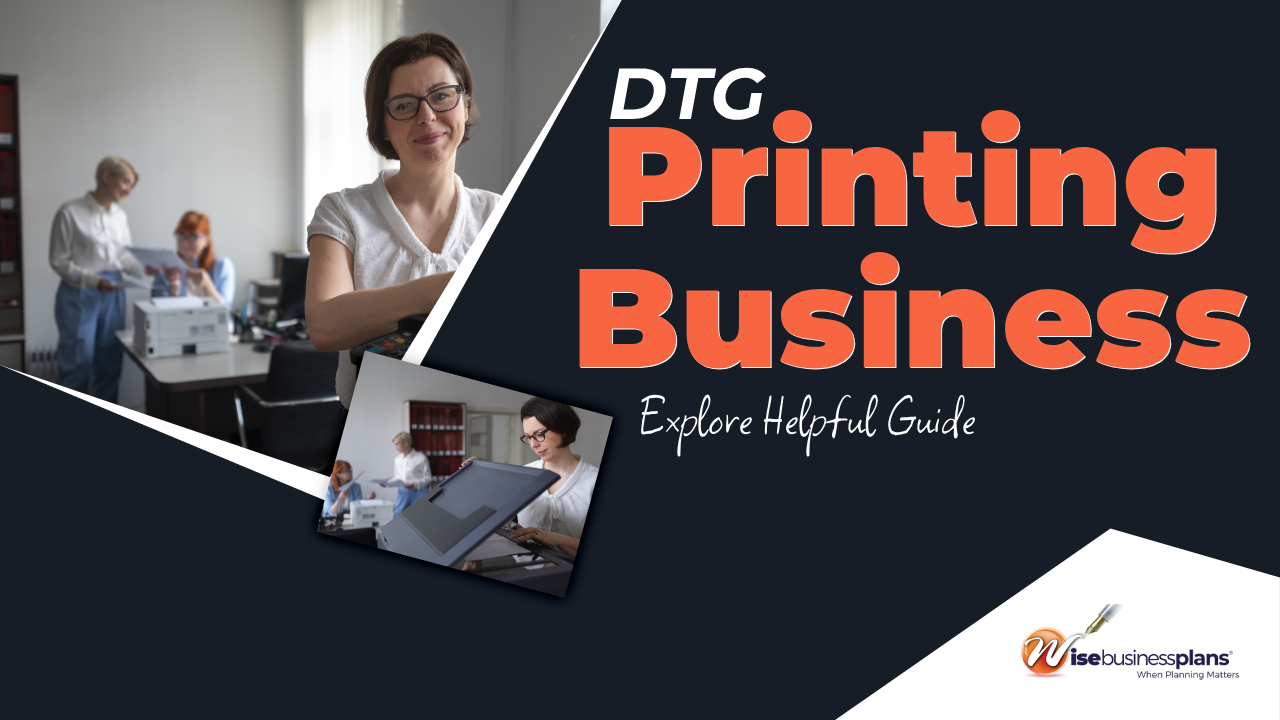A Beginner’s Guide to DTG Printing Business
Starting a direct-to-garment (DTG) printing business can be an exciting and lucrative venture. With advancements in technology, DTG printing has become an accessible and effective way to produce high-quality, customized apparel. This comprehensive guide will walk you through the essentials of launching a DTG printing business and provide detailed insights into choosing the right DTG printer, addressing the eight crucial factors that will influence your investment decision.
On this page
- Understanding DTG Printing
- Key Advantages of DTG Printing
- Getting Started with Your DTG Printing Business
- Conduct Market Research
- Develop a Business Plan
- Legal and Administrative Setup
- Invest in Equipment and Supplies
- Design and Production Workflow
- Marketing and Sales
- Customer Service and Satisfaction
- 8 Crucial Factors When Shopping for DTG Printers
- 1. Printer Quality: Ensuring Exceptional Print Outcomes
- 2. Printing Speed: Meeting Production Requirements Efficiently
- 3. Ink Compatibility: Opt for Versatility and Flexibility
- 4. Printer Maintenance: Ensure Longevity and Reliability
- 5. Production Size: Assessing Your Printing Needs
- 6. Software Compatibility: Ensuring Integration with Systems
- 7. Cost Effectiveness: Seeking Value in Your Investment
- 8. User Feedback and Customer Service: Relying on Shared Experiences
- Conclusion
Understanding DTG Printing
Direct-to-garment (DTG) printing is a method that uses inkjet technology to print designs directly onto fabrics. This process involves applying a special ink that is absorbed by the fibers of the garment, producing vibrant, detailed images with high colour accuracy. DTG printing is particularly advantageous for small to medium-sized runs and for designs with intricate details and a wide range of colours.
Key Advantages of DTG Printing
- High-Quality Prints: DTG printers can produce photo-quality prints with detailed graphics and a wide color gamut.
- No Minimum Order Requirements: Ideal for custom and on-demand printing, DTG printing allows you to fulfill small orders without significant setup costs.
- Versatility: Works well with various fabric types, including cotton and cotton-blend garments.
- Ease of Use: Modern DTG printers come with user-friendly interfaces and software that simplify the printing process.
Getting Started with Your DTG Printing Business
Conduct Market Research
Before diving into the DTG printing business, it’s crucial to understand the market landscape. Conduct market research to identify potential customers, competitors, and industry trends. Consider the following:
- Target Market: Determine who your potential customers are. Are you targeting businesses for promotional apparel, individual customers for custom designs, or niche markets such as sports teams or events?
- Competitive Analysis: Analyze competitors to understand their offerings, pricing strategies, and market position. This insight will help you differentiate your business.
- Industry Trends: Stay informed about emerging trends in the apparel and printing industries to keep your offerings relevant.
Develop a Business Plan
A well-structured business plan is essential for guiding your business operations and securing funding. Your business plan should include:
- Business Model: Define your business model—will you operate online, through a physical store, or both? Will you offer design services in-house or work with external designers?
- Financial Projections: Include detailed financial projections, including startup costs, operating expenses, revenue forecasts, and profitability analysis.
- Marketing Strategy: Outline your approach to marketing and sales, including online and offline strategies to attract and retain customers.
Legal and Administrative Setup
Ensure your business is legally compliant and well-organized by addressing the following:
- Business Registration: Register your business name and choose the appropriate legal structure (e.g., sole proprietorship, LLC, corporation).
- Licenses and Permits: Obtain the necessary licenses and permits required for operating a printing business in your location.
- Intellectual Property: Protect your designs and brand by considering trademarks or copyrights.
Invest in Equipment and Supplies
Your choice of equipment will significantly impact your business’s efficiency and product quality. Key equipment and supplies include:
- DTG Printers: Choose a high-quality DTG printer that meets your production needs (more on this later).
- Inks and Pretreatment Solutions: Invest in high-quality inks and pretreatment solutions to ensure print durability and color vibrancy.
- Garments: Source quality garments from reliable suppliers to offer a range of options to your customers.
Design and Production Workflow
Develop an efficient workflow for handling designs and printing orders:
- Design Software: Use professional design software compatible with your DTG printer to create and manage print files.
- Pretreatment Process: Implement a consistent pretreatment process to prepare garments for printing, ensuring optimal ink adhesion and print quality.
- Printing Process: Streamline your printing process to maximize efficiency, including setting up proper curing and finishing procedures.
Marketing and Sales
Effective marketing is crucial for attracting customers and building your brand. Consider the following strategies:
- Online Presence: Create a professional website and utilize social media platforms to showcase your products and reach a broader audience.
- Advertising: Invest in online advertising, such as Google Ads or Facebook Ads, to target potential customers.
- Local Marketing: Network with local businesses and participate in community events to increase your visibility.
Customer Service and Satisfaction
Providing excellent customer service is key to building a loyal customer base:
- Communication: Maintain clear and responsive communication with customers throughout the order process.
- Quality Control: Implement a quality control system to ensure that all prints meet your standards before delivery.
- Feedback: Encourage customer feedback and use it to improve your products and services.
Looking to turn your creativity into a business? Get expert help with a business plan to start selling your handmade crafts or printables today!
8 Crucial Factors When Shopping for DTG Printers

With the progress of technology, the field of printing has undergone changes over time. Nowadays, it’s easy to create high-quality designs on fabrics and materials with a few simple clicks at an affordable price. One notable advancement in this sector is direct-to-garment (DTG) printing. These printers have transformed how we print designs on clothing by offering a range of color options, intricate details, and top-notch quality.
However, given the multitude of DTG printers for sale, selecting the right one for your business can be quite overwhelming. To simplify your search process and assist you in making an investment decision, here are eight factors to take into account when shopping for the best DTG printers for sale.
1. Printer Quality: Ensuring Exceptional Print Outcomes
It’s crucial to choose a DTG printer that delivers good print quality. The printer should be able to reproduce colorful designs accurately without any blurring or color-bleeding issues. Make sure that the printer supports high-resolution images for prints that truly reflect your flair.
2. Printing Speed: Meeting Production Requirements Efficiently
In running a printing business or handling orders effectively, print speed plays a critical role. When looking for a DTG printer, make sure to find one that can print quickly without compromising quality. This will help you meet your deadlines while keeping your production efficient.
3. Ink Compatibility: Opt for Versatility and Flexibility
DTG printers use types of ink sets such as water-based or pigment-based inks, each with its own advantages and characteristics. It’s important to choose a printer that offers compatibility with different types of ink. This allows you to try out fabrics and ensures that your prints stay for long, even after multiple washes.
4. Printer Maintenance: Ensure Longevity and Reliability

Like any equipment, regular maintenance is crucial to maintain the optimal performance and durability of your chosen DTG printer. Look for printers that are user-friendly and come with automated maintenance features like flushing, nozzle cleaning, and clog-prevention mechanisms. Also, make sure the printer manufacturer offers customer support and available replacement parts when needed.
5. Production Size: Assessing Your Printing Needs
DTG printers come in different production sizes. Consider the volume of orders you handle daily and select a printer that aligns with your business requirements. Investing in a printer to handle large printing volumes will save you time, cut down production costs, and streamline your workflow.
6. Software Compatibility: Ensuring Integration with Systems
Efficiently managing print files proves crucial for any printing business. Make sure the DTG printer you opt for works with used design software programs to smoothen the transition from design to print. This functionality saves time and removes the necessity for software or complicated file conversions.
7. Cost Effectiveness: Seeking Value in Your Investment
The upfront cost of acquiring a DTG printer is undeniably a consideration when making decisions. Nevertheless, it’s vital to assess both long-term expenses associated with each model before reaching a decision. Factor in aspects like ink usage per print maintenance needs, machine lifespan, and potential repair costs to identify the viable choice that ensures optimal returns on your investment.
8. User Feedback and Customer Service: Relying on Shared Experiences
Lastly, take into account user reviews and testimonials when thoroughly researching the brands from which you’re contemplating purchasing. Real-life experiences shared by individuals who have already invested in those brands can offer insights into reliability concerns, the efficiency of technical support, the availability of spare parts, fulfillment of warranties, and overall customer satisfaction.
Ready to turn your spare space into extra income? Get help with a professional business plan to maximize your rental potential!
Conclusion
Starting a DTG printing business can be a rewarding venture, but it requires careful planning and consideration. By understanding the fundamentals of DTG printing, conducting thorough market research, developing a solid business plan, and investing in the right equipment, you can set yourself up for success.
Remember to prioritize customer satisfaction, stay updated on industry trends, and continuously strive to improve your products and services. With dedication, perseverance, and a passion for creativity, you can build a thriving DTG printing business that delivers high-quality, customized apparel to your target market.













